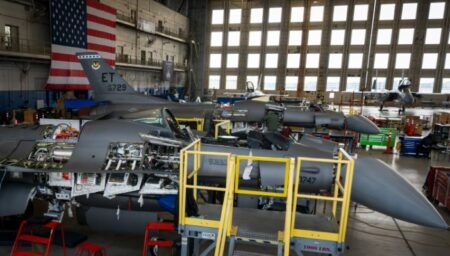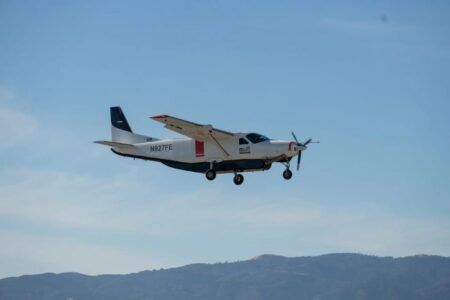The aviation industry in Europe has agreed on a range of potential ways to combat the increasing threat posed by the jamming and spoofing of global satellite positioning systems.
The measures were agreed upon at an event held in Cologne, Germany last week that involved more than 120 industry representatives from airlines, system suppliers, ANSPs and other institutions.
Recent years have seen a rise in the number of Global Navigation Satellite System (GNSS) jamming and spoofing incidents around the world, particularly across Eastern Europe and the Middle East, reports the European Union Aviation Safety Agency (EASA).
GNSS uses satellite constellations such as the US Global Positioning System (GPS) and the EU’s Galileo to provide aircraft with Positioning, Navigation, and Timing (PNT) services.
Jamming blocks a signal, while spoofing sends false information to the receiver on board the aircraft to disrupt flights.
The problem has existed for several years, and although technical solutions are developed, equipment suppliers and GNSS providers are locked in a game of cat and mouse to provide resilience against attacks.
National aviation authorities in Europe have tasked EASA with developing measures to counter the risks that spoofing and jamming pose.
The event last week, which was organised with the airline trade organisation International Air Transport Association (IATA, concluded that in the absence of immediate fixes, mitigating the risks requires short-, medium- and long-term measures, beginning with the sharing of incident information and remedies.
Acting executive director of EASA Luc Tytgat said, “GNSS systems offer tremendous advantages to aviation in increasing the safety of operations in a busy shared airspace. But we have seen a sharp rise in attacks on these systems, which poses a safety risk.
“We immediately need to ensure that pilots and crews can identify the risks and know how to react and land safely. In the medium term, we will need to adapt the certification requirements of the navigation and landing systems.
“For the longer term, we need to ensure we are involved in the design of future satellite navigation systems. Countering this risk is a priority for the Agency.”
EASA and IATA are continuing discussions to launch the initiative to report and share spoofing and jamming data in Europe and globally following the event.
Willie Walsh, IATA’s director general said, “Airlines are seeing a significant rise in incidents of GNSS interference. To counter this, we need coordinated collection and sharing of GNSS safety data, universal procedural GNSS incident guidance from aircraft manufacturers and a commitment from States to retain traditional navigation systems as backup in cases where GNSS are spoofed or jammed.
“In actioning these items, the support and resources of EASA and other governmental authorities are essential and airlines will be critical partners. Whatever actions are taken, they must be the focal point of the solution as they are the front line facing the risk.”
EASA added that aircraft OEMs will be instructed to provide more guidance on managing jamming and spoofing situations to ensure that aircraft operators are equipped to manage them. The safety regulator will also take steps to set up of an alerting system to inform airlines, air navigation service providers (ANSPs) and airports about attacks.





